Determining the Ideal Frequency for Roof Replacement
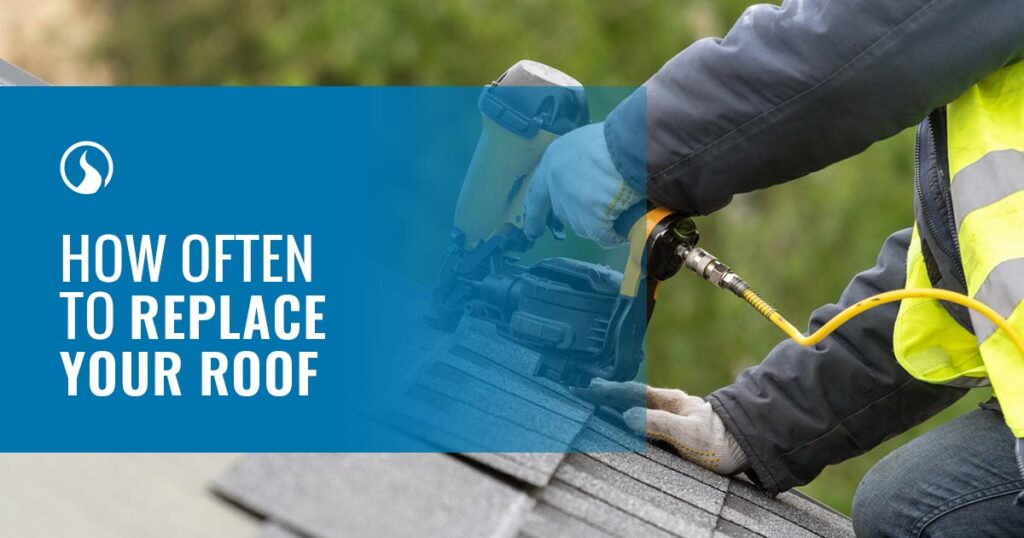
Roofs protect our homes from weather and damage night and day. Despite this, it’s easy to forget about your roof until it’s too late. With so many household tasks to manage, you might not know when — or if — to replace your roof. Plus, it’s a difficult place to access, and many roof problems are hard to spot without professional experience.
The last thing you want is to be caught with a damaged roof, but how do you know when to replace it? In this guide, we’ll cover roof life spans, signs of roof damage and things to keep in mind for a roof replacement so you can be better prepared to care for your home. Keep reading to learn everything there is to know about when to replace a roof.
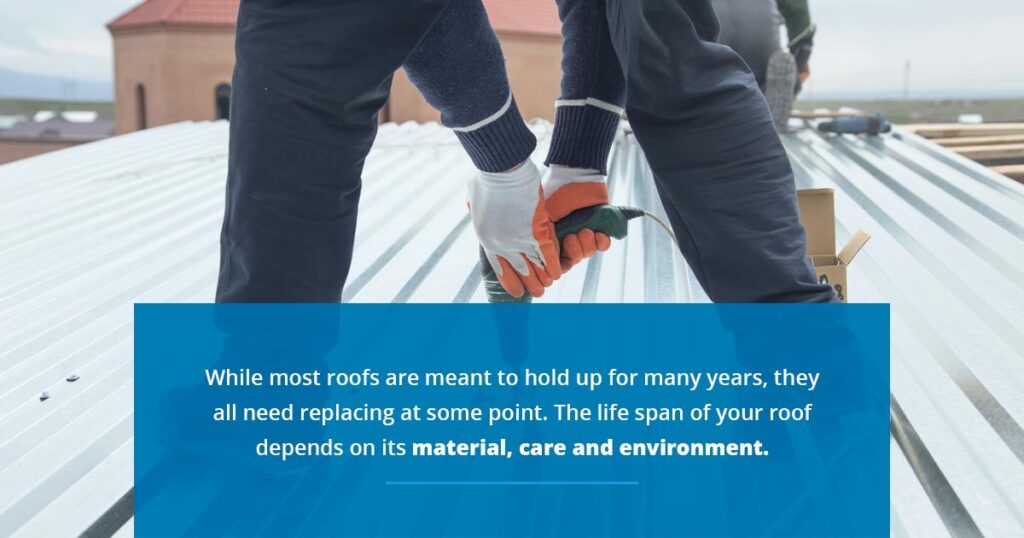
When Does a Roof Need to Be Replaced?
Roofs are built to last — they need to stand up to years of changing weather, climate and use. While most roofs are meant to hold up for many years, they all need replacing at some point. The life span of your roof depends on its material, care and environment. Paying for a premium roof might cost more upfront, but it’ll last you longer, saving you money on more frequent replacements.
Whatever your roof material, it’ll need regular care and maintenance to ensure it lasts as long as possible. Your roof can last below or over its expected life span, but here are the estimated roof life expectancies according to the International Association of Certified Home Inspectors:
Clay and concrete: 100+ years
Copper: 70+ years
Slate: 60-150 years
Metal: 40-80 years
Wood: 25 years
Asphalt shingles: 20 years
Aluminum coating: 3-7 years
There are many more roofing materials than the ones listed above, and special designs or technologies may make your roof more durable than other popular materials. Check your purchase or repair documents if you don’t know what kind of roof you have. You can also schedule an inspection with a roofing company to find out your roof material, how old it is and what condition it’s in.
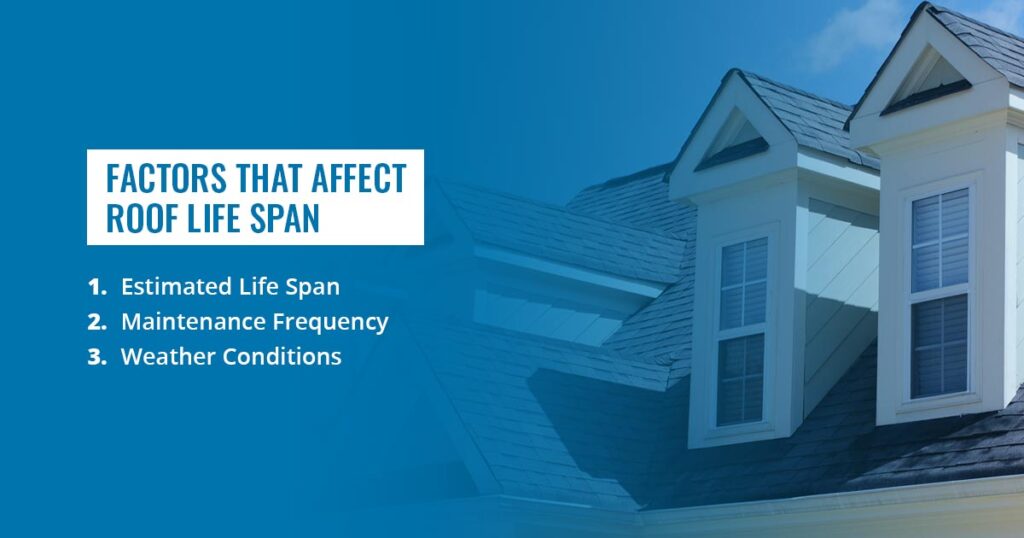
Factors That Affect Roof Life Span
There are several variables that influence the life span of your roof. Due to the size of a roof and the constant exposure and weathering it gets, there’s no exact timeframe for roof replacement. You’ll need to visually examine your roof, get professional inspections and keep track of the roof’s life expectancy to help you determine when to replace the roof.
1. Estimated Life Span
The estimated life span is a significant factor for roofs. Different materials will stand up to time, wear and tear differently. You should replace roof shingles entirely after about 20 years, but if any of the shingles are bent or damaged, they’ll need repair and replacement as soon as possible. The roof material you select will depend on your budget, home and location, but roofs will last different lengths of time depending on their construction and materials.
2. Maintenance Frequency
Maintenance is another essential factor for roof life length. Neglecting your roof health allows damage to become worse. The longer you leave problems unaddressed, the more expensive repairs will be.
Perform a visual inspection from the ground and the attic to see if you can spot any visible issues with your roof. Examining the roof after harsh weather is essential, as tree limbs, wind and water can damage the structure. Additionally, have professional maintenance done every few years and an inspection performed every year to keep the roof in top condition.
3. Weather Conditions
Weather also influences your roof’s life span. The unique weather and climate where you live will affect what roof material you use and how often you need to replace the roof. Shingle roofs in areas with high winds require shingle replacement more frequently. Certain weather conditions can cause roofs to crack or mold more quickly, which means you’ll need more care and roof replacement.
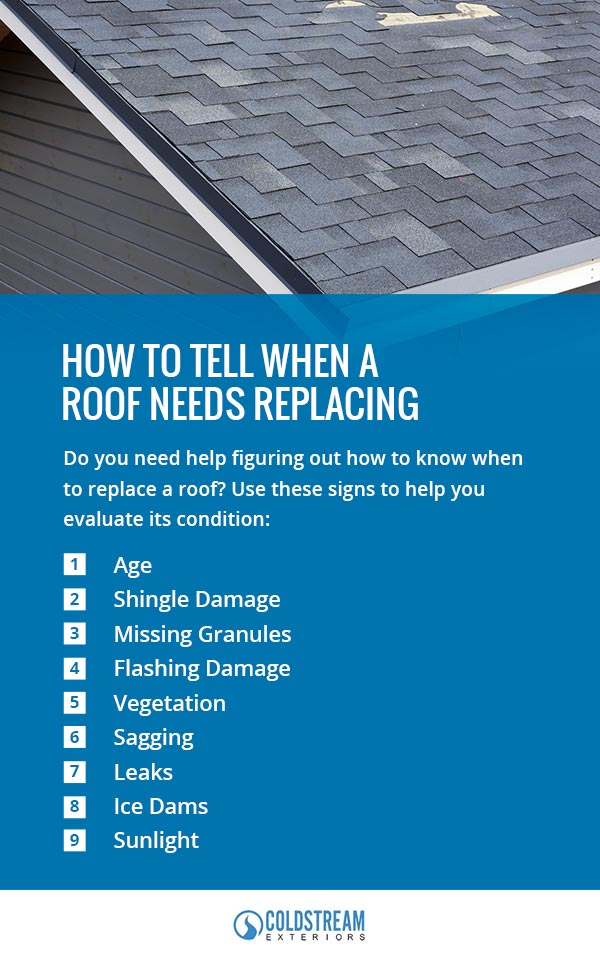
How to Tell When a Roof Needs Replacing
With everything going on in your life, it can be challenging to know when to replace your roof. Roofs are large and hard to get to — it’s easy to ignore them when doing house maintenance. Due to your roof’s importance, it’s essential to regularly monitor its condition to protect your home from damage.
Do you need help figuring out how to know when to replace a roof? Use these signs to help you evaluate its condition:
1. Age
If your roof is near or beyond its expected life span, you should start looking into a roof replacement. A well-maintained roof can last beyond its expected life, but the older your roof gets, the more expensive replacement and repairs could be. Beyond the expected life span, your roof can experience more severe damage and wear, especially if it isn’t being inspected.
If your roof is halfway through its life span, or you can’t remember the last time you got it inspected, contact a professional. Getting a professional inspection can help you understand what to watch out for, what the state of your roof is and what you can do to keep it in top condition for many years.
2. Shingle Damage
Shingles protect your roof from moisture and water damage so your home stays dry and comfortable. While one or two damaged shingles might not seem like a big deal, they can lead to severe problems if left unchecked. Give your roof a quick visual scan — if you see cracked, bent, missing or damaged shingles, it could mean you need a roof replacement.
Typically, damaged shingles simply need a professional repair to replace the problem pieces. If the shingles have been damaged for a long enough period, you might have water damage to your roof that needs replacing or fixing. While examining the roof for the shingle repair, the professional can see if further repairs are needed or if the entire roof needs to go.
3. Missing Granules
If you have a shingle roof, the granules on the shingles can fall off over time due to weather and age. You might see patchy or bare spots on the roof — a sign you’ve got missing granules. Granules help protect the shingles and the roof, so numerous missing granules could mean your roof is exposed to water and weather. If left long enough, you could have a serious moisture problem.
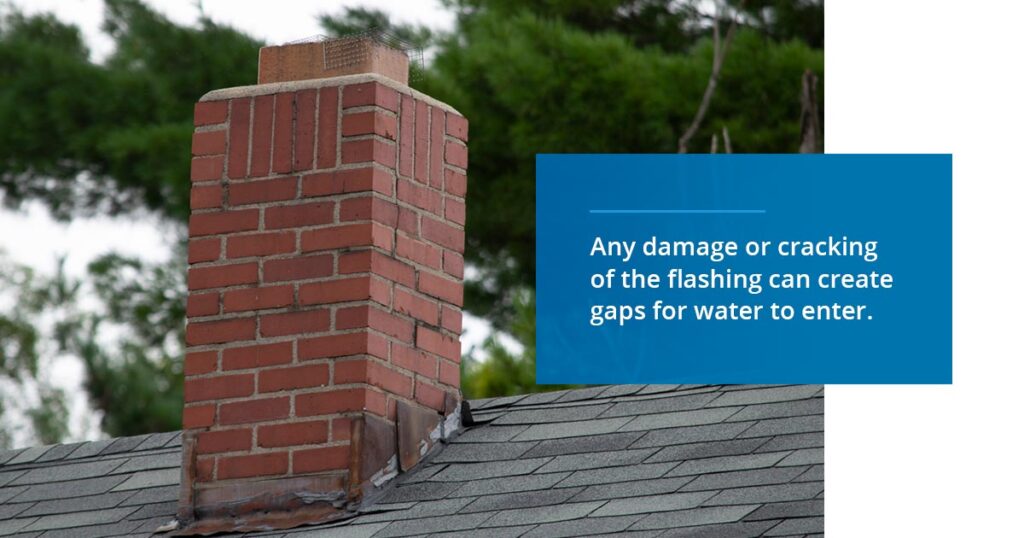
4. Flashing Damage
Flashing is an essential part of any roof. It prevents water from leaking into points where the roof meets pipes, walls, chimneys, ridges and other roof components. Any damage or cracking of the flashing can create gaps for water to enter. Once water can get through the flashing, it can cause rot and mold damage to your roof and home.
5. Vegetation
While some periodic vegetation growth is expected, rapid or extensive moss growth indicates you have a moisture problem on your hands. While regular moss removal is part of routine maintenance, clearing the vegetation won’t solve the issue if you have a leak or water accumulation. If you’re seeing extensive moss growth on your roof, have a professional take a look. The more water settles in or on your roof, the more repairs will be necessary.
Moss can also pry up shingles and damage them. Without the protective shingles, your roof is even more exposed to weather and water damage. Lots of moss could mean you need an entire roof replacement, so get a professional to inspect your roof for problems.
6. Sagging
If your roof is sagging or drooping in spots, you need to look into getting your roof replaced immediately. Sagging can mean you’ve had standing water collecting in a section of your roof for a long time. Without a repair or replacement, sagging and drooping can lead to a roof collapse, which poses a serious threat to your safety. The damage caused by standing water might also lead to extensive repairs in your home beyond a roof replacement.
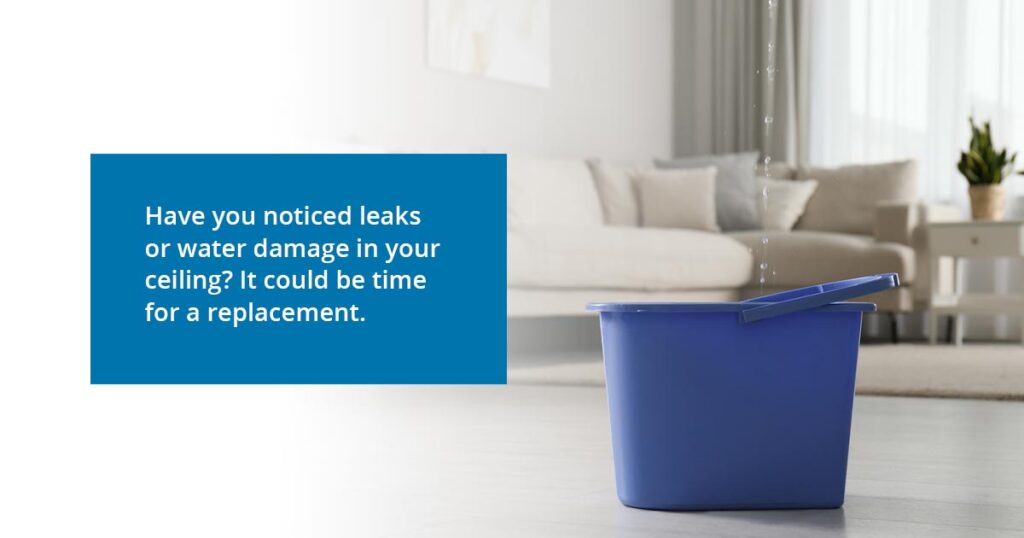
7. Leaks
Have you noticed leaks or water damage in your ceiling? It could be time for a replacement. If you’re seeing stains forming in the ceiling, feel moisture in the attic or notice a full-blown leak coming from your roof, it could have a hole. Severe water damage might be a sign your roof needs an overhaul. Any moisture getting into your home can lead to mold, rot or even a replacement of structures and ceilings.
8. Ice Dams
Seeing the occasional ice dam every few years isn’t a cause for concern, but ice dams every year could be a sign you need a new roof. When the roof ridge is warmer than its edges, ice and snow melt at the top and flow to the sides, where they freeze and form ice dams.
Ice dams can loosen shingles, damage drip edges, tear off gutters and create water backups. Too much of this will damage your roof extensively, so get it inspected and even replaced before this occurs.
9. Sunlight
Take a trip into your attic to see if you can spot any visible roof holes. The most apparent sign is sunlight. Any sunlight coming through your roof means you need to contact a professional immediately. Roofs should be completely sealed against outside elements — sunlight means animals, water, debris and other dangers can get inside the house and cause problems.
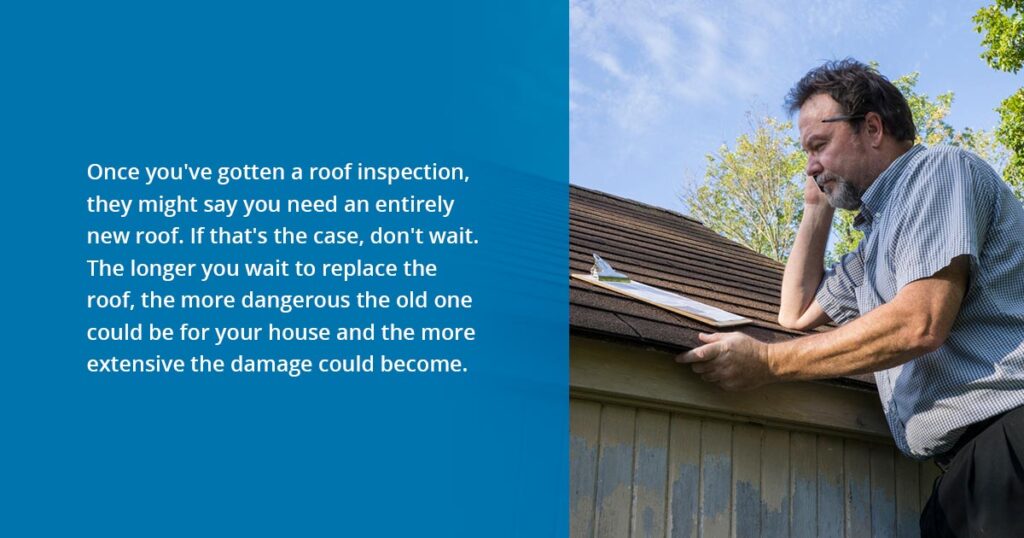
Things to Consider When Replacing a Roof
If you’re seeing the above signs of damage on your roof, it’s time to contact a professional. Once you’ve gotten a roof inspection, they might say you need an entirely new roof. If that’s the case, don’t wait. The longer you wait to replace the roof, the more dangerous the old one could be for your house and the more extensive the damage could become.
Here are a few factors you should consider when it’s time to replace your roof:
1. Roof Materials
For replacements, you’ll have to consider roof materials carefully. There are several types of roofing materials available for residential roofs, and the best one for you will depend on your budget, location and needs. Roofing technology has come incredibly far in the past few years, so you may find new types of roofs you haven’t heard of that would be perfect for your home.
Sustainable roofing materials are an excellent option for homes — they help reduce energy expenses and keep your home protected and comfortable year-round. Talk to a roofing company about your options and find a durable, long-lasting roof for your replacement.
2. Budget
Finances have a big impact on home maintenance decisions. While you should work with your roofer to find the best fit for your budget, don’t choose a roof just based on price.
It’s true that you can save money on the initial roof investment by choosing something cheaper, but you’ll probably pay more money to manage and maintain it in the long run. Cheaper roofs aren’t built from high-quality materials and will likely need more frequent repairs than roofs that require more of an initial investment.
Ultimately, you should weigh the initial roof replacement costs with estimated long-term expenses to find your perfect roof.
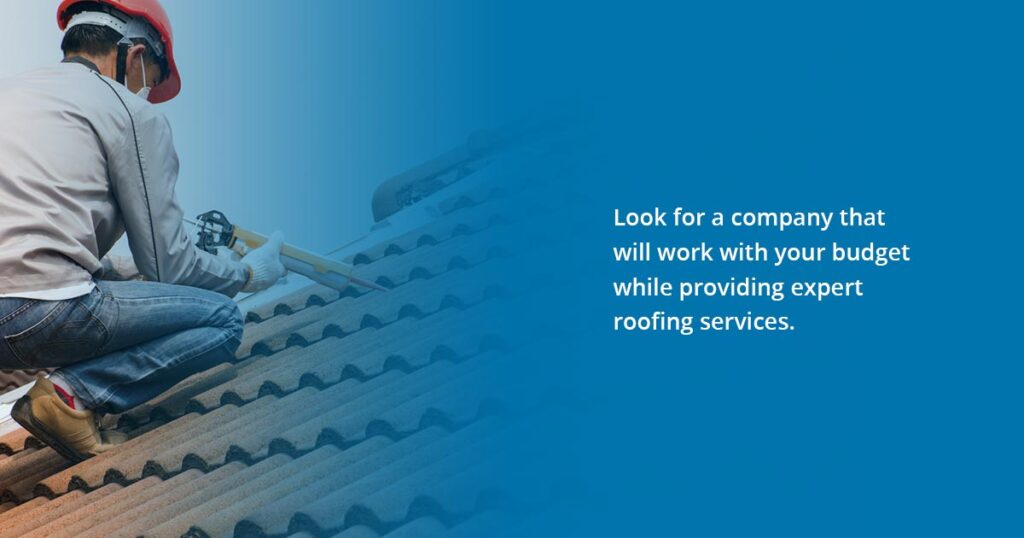
3. Roofing Company
Finding the right company for the job is crucial to getting a long-lasting, quality roof replacement. Look for a roofing company that will work with your budget while providing expert roofing services. The company’s reviews, past work and references can help you see real results. Always choose a licensed and insured contractor to ensure you’re getting a safe, trustworthy roofing service.
4. Noise
Roof removal and installation is a noisy process, so prepare for the volume when scheduling replacement dates. Removal should only take a couple of days at most, but you’ll want it to be days you won’t be disturbed by the noise level.
If you work from home, plan to work at a coffee shop or library to avoid construction noise. If you have pets or small children, you might want to take them out of the house or have them looked after elsewhere so they won’t be afraid of the noise. The roofing process will have a schedule laid out, but sometimes projects go over time. If this happens, you’ll want to find other daytime accommodations for yourself and your household if the noise is too much.
5. Time of Year
Spring and fall are the best times to replace a roof. The less extreme temperatures make it easier and more comfortable for roofers to finish their work. It also means you aren’t left with a half-done roof when a heat wave or snowstorm rolls into town. These seasons are also the perfect times to get any roof inspections or repairs performed. With winter or summer right around the corner, you don’t want to get caught with severe roof damage as the weather becomes less forgiving.
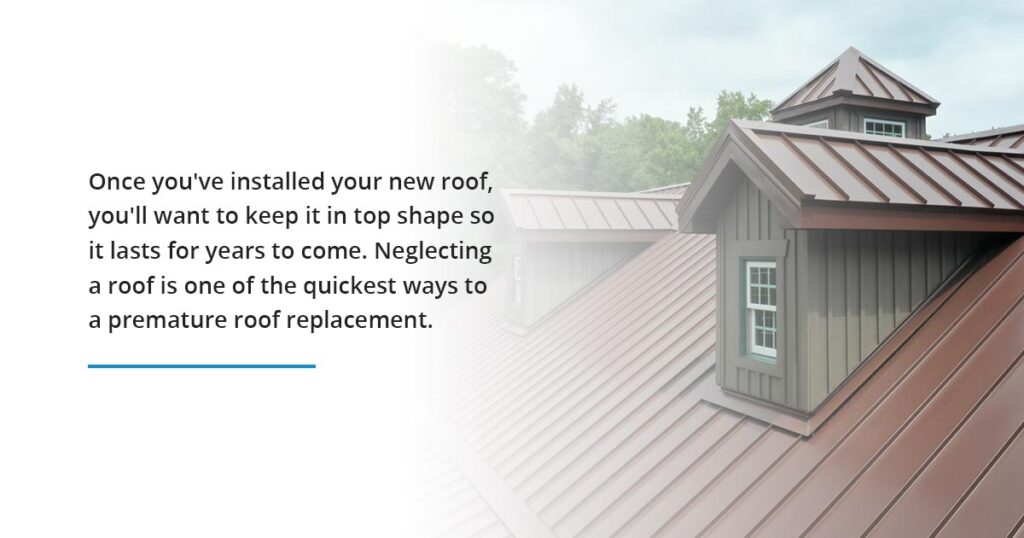
How to Keep Your Roof in Top Shape
Once you’ve installed your new roof, you’ll want to keep it in top shape so it lasts for years to come. Neglecting a roof is one of the quickest ways to a premature roof replacement. Here are several tips you can use to keep your new roof in prime condition:
Clean out gutters: Keep gutters clear of debris to prevent water from sitting on your roof. Once water is allowed to settle on or under your roof, it can lead to severe water damage. All that gutter debris piling up puts strain on your gutters and roof.
Check chimneys: Keep your chimneys in top condition — look for missing or cracked mortar. Mortar holds the chimney bricks together, so you could have loose bricks falling onto your roof if it fails. Get any broken-down mortar repaired immediately to prevent this.
Inspect roof regularly: Check your roof periodically for leaks, moss, dark spots, flashing damage and cracked or missing shingles. If you notice any roof problems, get them fixed as soon as possible.
Clear the roof: Along with the inspection, you should clean your roof when needed. Letting dirt and water build up lets moss, lichen, algae and fungi grow on your roof, causing damaged shingles and other roof problems. Vegetation can also cause your roof to disintegrate over time. Use power washing, soft washing or a professional service to keep your roof clean.
Look for rust: If you have any metal components on your roof, check them for rust or corrosion. If you spot any rust, you can remove it with a wire brush. After brushing, you can prime and paint the rusted area to prolong its life and prevent further damage.
Prevent ice dams: As mentioned above, uneven roof temperatures lead to roof-damaging ice dams. Prevent these with even insulation throughout your roof. Keeping a roof and home well-insulated help ensure the exterior roof stays the same temperature as the outside, so ice dams don’t occur.
Replace sealant: Inspect the roof to see if there’s any worn or cracked sealant. If you find any, remove the existing sealant and add a new coat to keep the elements out.
Check attic: Don’t just visually inspect the exterior roof — examine your attic as well. Look for moisture or leaks in case you’ve missed something on the outside. Also, look for signs of animal activity. Sometimes, animals will find their way into your attic through holes in the roof. Once inside, they’ll damage insulation and the home while they nest.
Trim branches: Trim back any branches near or above the roof. Loose or dead branches can fall onto the roof during high winds and storms, leading to holes and broken roof parts. Keeping trees away from the roof will reduce the chance of falling branch damage.
Along with performing regular inspections and minor maintenance, get your roof looked at by a professional at least once a year. Professionals can spot existing and potential problems you might not notice. They’ll also be better able to inspect the roof’s exterior safely and efficiently.
Once a professional has inspected your roof, they can make recommendations for repairs. They can also give you advice for protecting your roof against further damage since they’ll have the best information on roof protection for your specific location. You’ll also save money in the long run with regular inspections. They can catch minor, less expensive problems before they become major, serious issues.
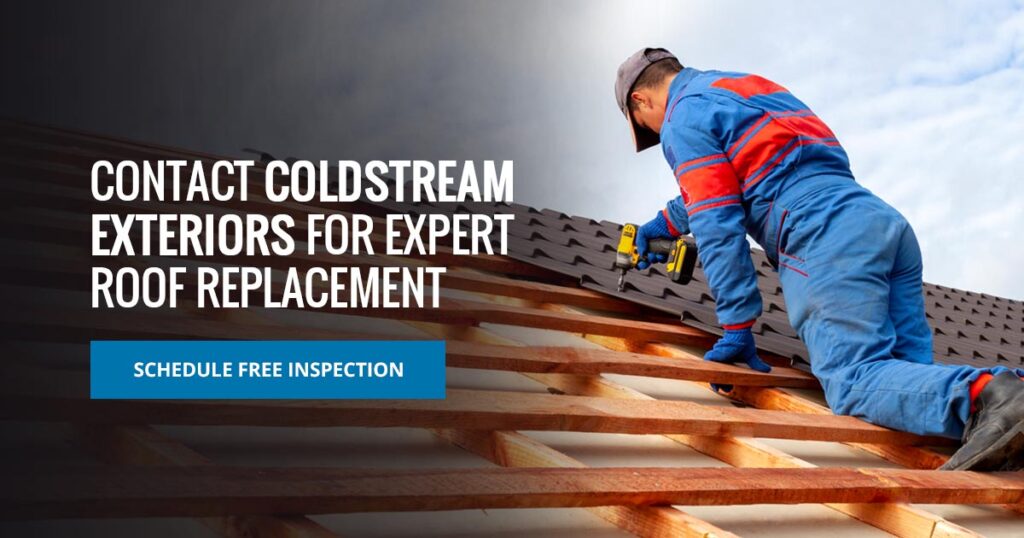
Contact Coldstream Exteriors for Expert Roof Replacement
Replacing a roof is a significant investment — you want the best possible replacement to protect your home. If you’re in the greater St. Louis, Tampa or Cincinnati areas, Coldstream Exteriors is here for expert roofing repairs and replacements. With over 25 years of experience, you can trust our skilled team to provide efficient, superior services at affordable rates.
To ensure you get the best customer experience, we offer industry-leading warranties, free estimates and 0% and low-interest financing. We never ask for payment until project completion, so you can be sure you’re fully satisfied with our work. Our high-quality project results have earned us the 2021 Angie’s List Super Service Award and an A+ rating from the Better Business Bureau.
Contact us to schedule your free inspection and get started on your next roofing project today!
